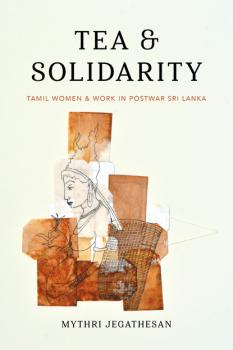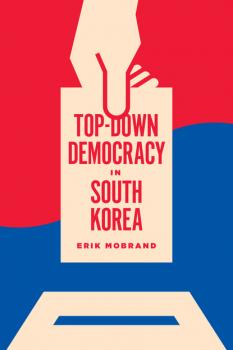Историческая литература
Различные книги в жанре Историческая литератураClimate Change and the Art of Devotion
In the enchanted world of Braj, the primary pilgrimage center in north India for worshippers of Krishna, each stone, river, and tree is considered sacred. In Climate Change and the Art of Devotion , Sugata Ray shows how this place-centered theology emerged in the wake of the Little Ice Age (ca. 1550–1850), an epoch marked by climatic catastrophes across the globe. Using the frame of geoaesthetics, he compares early modern conceptions of the environment and current assumptions about nature and culture.A groundbreaking contribution to the emerging field of eco–art history, the book examines architecture, paintings, photography, and prints created in Braj alongside theological treatises and devotional poetry to foreground seepages between the natural ecosystem and cultural production. The paintings of deified rivers, temples that emulate fragrant groves, and talismanic bleeding rocks that Ray discusses will captivate readers interested in environmental humanities and South Asian art history.
Tea and Solidarity
Beyond nostalgic tea industry ads romanticizing colonial Ceylon and the impoverished conditions that beleaguer Tamil tea workers are the stories of the women, men, and children who have built their families and lives in line houses on tea plantations since the nineteenth century. The tea industry’s economic crisis and Sri Lanka's twenty-six year long civil war have ushered in changes to life and work on the plantations, where family members now migrate from plucking tea to performing domestic work in the capital city of Colombo or farther afield in the Middle East. Using feminist ethnographic methods in research that spans the transitional time between 2008 and 2017, Mythri Jegathesan presents the lived experience of these women and men working in agricultural, migrant, and intimate labor sectors.In Tea and Solidarity , Jegathesan seeks to expand anthropological understandings of dispossession, drawing attention to the political significance of gender as a key feature in investment and place making in Sri Lanka specifically, and South Asia more broadly. This vivid and engaging ethnography sheds light on an otherwise marginalized and often invisible minority whose labor and collective heritage of dispossession as “coolies” in colonial Ceylon are central to Sri Lanka’s global recognition, economic growth, and history as a postcolonial nation.
Top-Down Democracy in South Korea
Although South Korea is widely heralded as a successful new democracy—buttressed by a politically engaged public—elections have done less than expected to force political parties to reorganize their elitist structures. In Top-Down Democracy in South Korea , Erik Mobrand demonstrates that political elites, contrary to theoretical expectations, have responded to freer and fairer elections by entrenching rather than abandoning exclusionary practices and forms of party organization.Exploring South Korea’s political development from 1945 through the end of dictatorship in the 1980s and into the twenty-first century, Mobrand challenges the view that the origins of the postauthoritarian political system lie in a series of popular movements that eventually undid repression. He argues that we should think about democratization not as the establishment of an entirely new system, but as the subtle blending of new formal rules with earlier authority structures, political institutions, and legitimizing norms.
Bhakti and Power
Bhakti , a term ubiquitous in the religious life of South Asia, has meanings that shift dramatically according to context and sentiment. Sometimes translated as “personal devotion,” bhakti nonetheless implies and fosters public interaction. It is often associated with the marginalized voices of women and lower castes, yet it has also played a role in perpetuating injustice. Barriers have been torn down in the name of bhakti, while others have been built simultaneously. Bhakti and Power provides an accessible entry into key debates around issues such as these, presenting voices and vignettes from the sixth century to the present and from many parts of India’s cultural landscape. Written by a wide range of engaged scholars, this volume showcases one of the most influential concepts in Indian history—still a major force in the present day.
Marrying for a Future
The civil war between the Sri Lankan state and Tamil militants, which ended in 2009, lasted more than three decades and led to mass migration, mainly to India, Canada, England, and continental Europe. In Marrying for a Future , Sidharthan Maunaguru argues that the social institution of marriage has emerged as a critical means of building alliances between dispersed segments of Tamil communities, allowing scattered groups to reunite across national borders. Maunaguru explores how these fragmented communities were rekindled by connections fostered by key participants in and elements of the marriage process, such as wedding photographers, marriage brokers, legal documents, and transit places. Marrying for a Future contributes to transnational and diaspora marriage studies by looking at the temporary spaces through which migrants and refugees travel in addition to their home and host countries. It provides a new conceptual framework for studies on kinship and marriage and addresses a community that has been separated across borders as a result of war.
Mountain Temples and Temple Mountains
From approximately the third century BCE through the thirteenth century CE, the remote mountainous landscape around the glacial sources of the Ganga (Ganges) River in the Central Himalayas in northern India was transformed into a region encoded with deep meaning, one approached by millions of Hindus as a primary locus of pilgrimage.Nachiket Chanchani’s innovative study explores scores of stone edifices and steles that were erected in this landscape. Through their forms, locations, interactions with the natural environment, and sociopolitical context, these lithic ensembles evoked legendary worlds, embedded historical memories in the topography, changed the mountain range’s appearance, and shifted its semiotic effect. Mountain Temples and Temple Mountains also alters our understanding of the transmission of architectural knowledge and provides new evidence of how an enduring idea of India emerged in the subcontinent.
Empire of Style
Tang dynasty (618–907) China hummed with cosmopolitan trends. Its capital at Chang’an was the most populous city in the world and was connected via the Silk Road with the critical markets and thriving cultures of Central Asia and the Middle East. In Empire of Style , BuYun Chen reveals a vibrant fashion system that emerged through the efforts of Tang artisans, wearers, and critics of clothing. Across the empire, elite men and women subverted regulations on dress to acquire majestic silks and au courant designs, as shifts in economic and social structures gave rise to what we now recognize as precursors of a modern fashion system: a new consciousness of time, a game of imitation and emulation, and a shift in modes of production.This first book on fashion in premodern China is informed by archaeological sources—paintings, figurines, and silk artifacts—and textual records such as dynastic annals, poetry, tax documents, economic treatises, and sumptuary laws. Tang fashion is shown to have flourished in response to a confluence of social, economic, and political changes that brought innovative weavers and chic court elites to the forefront of history.
The White Lotus War
The White Lotus War (1796–1804) in central China marked the end of the Qing dynasty’s golden age and the fatal weakening of the imperial system itself. What started as a local rebellion grew into a serious political crisis, as the central government was no longer able to operate its military machine.Yingcong Dai’s comprehensive investigation reveals that the White Lotus rebels would have remained a relatively minor threat, if not for the Qing’s ill-managed response. Dai shows that the officials in charge of the suppression campaign were half-hearted about the fight and took advantage of the campaign to pursue personal gains. She challenges assumptions that the Qing relied upon local militias to exterminate the rebels, showing instead that the hiring of civilians became a pretext for misappropriation of war funds, resulting in the devastatingly high cost of the war. The mishandled demilitarization of the militiamen prolonged the hostilities when many of the dismissed troops turned into rebels themselves. The war’s long-term impact presaged the beginning of the disintegration of the Qing in the mid-nineteenth century and eruptions of the Taiping Rebellion and other uprisings. The White Lotus War will interest students and scholars of late imperial and modern Chinese history, as well as history buffs interested in the warfare of the early modern world.
Gold Rush Manliness
The mid-nineteenth-century gold rushes bring to mind raucous mining camps and slapped-together cities populated by carousing miners, gamblers, and prostitutes. Yet many of the white men who went to the gold fields were products of the Victorian era: educated men who valued morality and order. Examining the closely linked gold rushes in California and British Columbia, historian Christopher Herbert shows that these men worried about the meaning of their manhood in the near-anarchic, ethnically mixed societies that grew up around the mines. As white gold rushers emigrated west, they encountered a wide range of people they considered inferior and potentially dangerous to white dominance, including Latin American, Chinese, and Indigenous peoples.The way that white miners interacted with these groups reflected their conceptions of race and morality, as well as the distinct political principles and strategies of the US and British colonial governments. The white miners were accustomed to white male domination, and their anxiety to continue it played a central role in the construction of colonial regimes. In addition to renovating traditional understandings of the Pacific Slope gold rushes, Herbert argues that historians� understanding of white manliness has been too fixated on the eastern United States and Britain. In the nineteenth century, popular attention largely focused on the West. It was in the gold fields and the cities they spawned that new ideas of white manliness emerged, prefiguring transformations elsewhere.
A New Middle Kingdom
Historians have claimed that when social stability returned to Korea after a series of devastating invasions by the Japanese and Manchus around the turn of the seventeenth century, the late Chos n dynasty was a period of unprecedented economic and cultural renaissance. This book questions this age-old belief by claiming that true-view landscape and genre�paintings were most likely�adopted to propagandize�social harmony under Chos n rule and to justify the status, wealth,�and land grabs of the ruling class.�This volume also documents the popularity and misunderstanding of art books from China and, most controversially, Korean enthusiasm for artistic programs from Edo Japan, thus challenging academic stereotypes and nationalistic tendencies in scholarship. As the first truly interdisciplinary study of Korean art, A New Middle Kingdom illuminates the reality of the late Chos n society that its visual art attempted hide.









